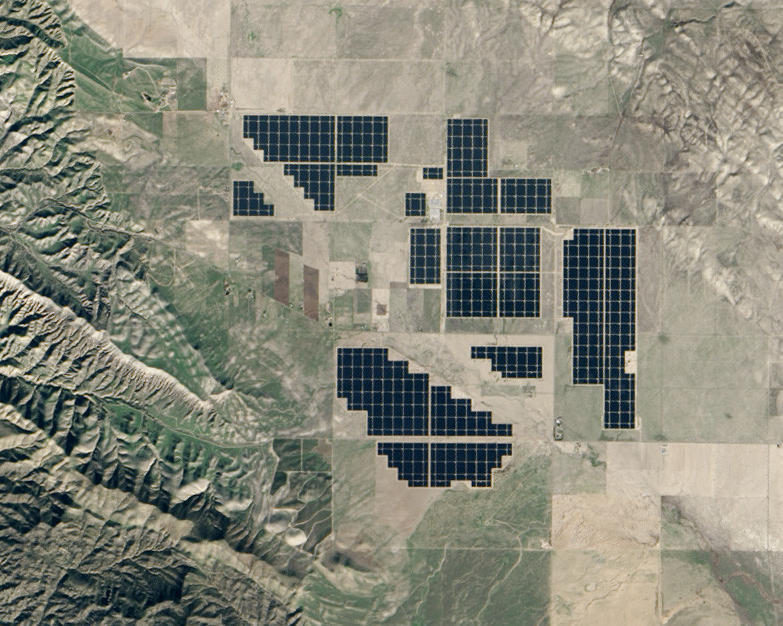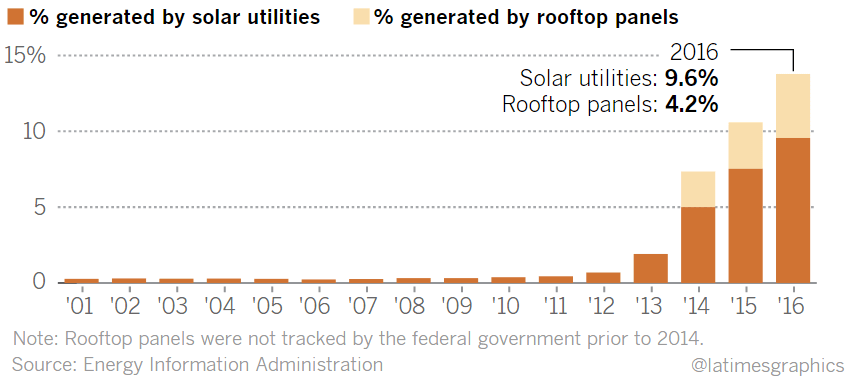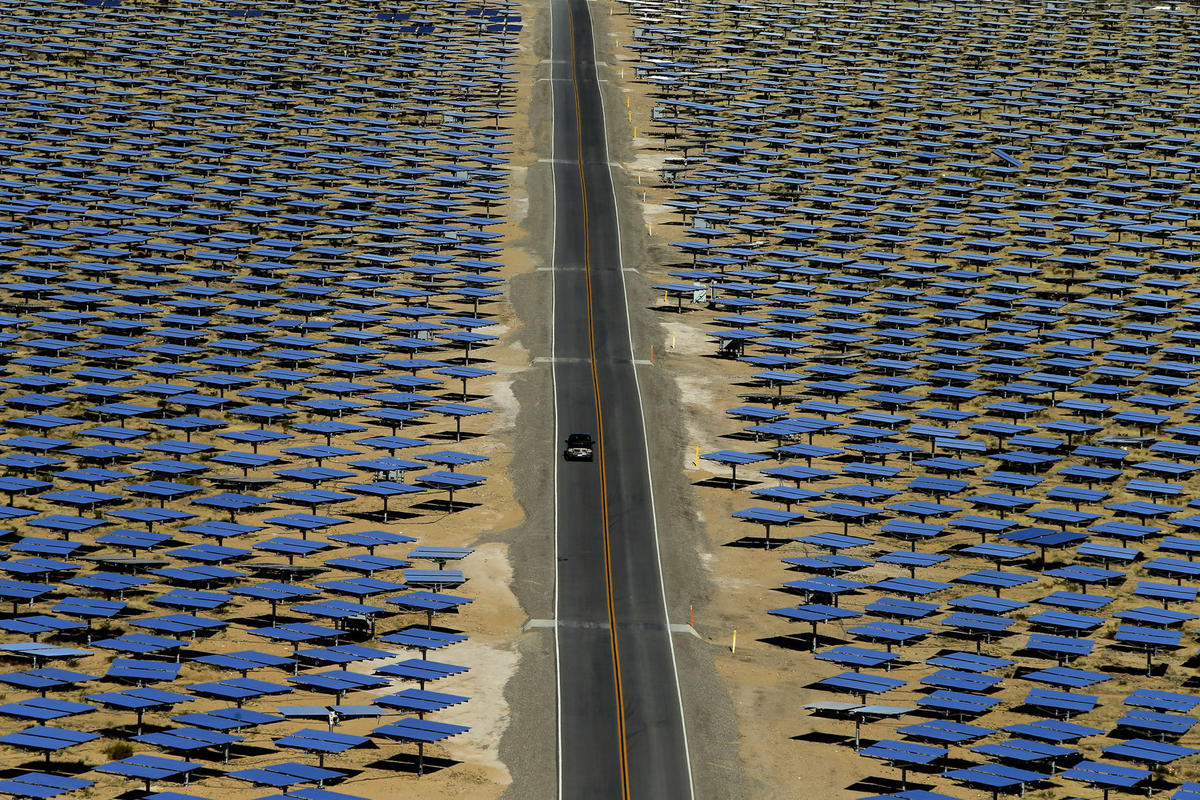California pays neighboring states to take away excess electricity from solar power plants

One of the world's largest solar power plants, Topaz Solar Farm on the Carrizo plain in the California Valley, about 160 km north-west of Los Angeles, generates enough energy to fully supply the 500,000th city. Photo: NASA
Another region of the world is faced with an excess of electricity due to the large number of solar panels and cloudless summer weather. This time such a misfortune occurred in California . In this state, there are so many solar power plants and so little power for accumulating the generated electricity that you have to stop the power plants or donate excess energy to the neighboring states at a negative price, that is, pay extra for its use, only to avoid overloading your networks.
14 days in March, 8 days in January, and 9 days in February 2017, neighboring Arizona received electricity with a surcharge from California. The gift to the neighbors could have been more if the California authorities had not ordered to temporarily stop a number of solar power plants or reduce generation. Other states also received electricity with a surcharge from California. According to experts, California pays its neighbors up to $ 25 per megawatt-hour, while consumers themselves usually pay from $ 14 to $ 45 per megawatt-hour in a normal situation when there is no surplus.
California solar power generation is growing very fast. Five years ago, its share in the total energy balance of the state was close to zero, and in 2016 it was already 13.8%, including 9.6% of commercial solar power plants, and 4.2% - panels on rooftops, which promotes Ilon Musk with his company SolarCity and other firms.

In general, from renewable sources, California already receives 27% of electricity, and in March 2017, the generation broke all records: 82.08 GWh. In the first quarter of 2017, the generation of solar and wind power plants was twice as high as last year.

Unfortunately, there is no single agency in California that would coordinate energy policy. Because of this, there are various absurdities that, from the point of view of centralized management, look ridiculous. For example, solar power plants stop due to an oversupply of electricity, while gas power plants continue to operate as before. Or the price paradox: electricity to neighboring states comes with a surcharge due to an oversupply, but the people of California themselves pay for electricity at rates 50% higher than the average for the rest of the US states.
On the one hand, the California Legislature (the legislative branch) has set a goal to reach 50% of energy from renewable sources by 2030 and actively stimulates their distribution. As a result, the efficiency of solar panels is growing, and their prices and the cost of generation are plummeting. From 2010 to 2016, the cost of solar energy decreased by 73%, that is, almost four times - and now amounts to 5-6 cents per kilowatt-hour. This is about the same as the cost of electricity from a gas power station and about half the price of atomic energy.

The Ivanpah Solar Electric Generating System electric generating system of the NRG Energy and BrightSource Energy companies occupies 14 km² in the Mojave Desert, supplying electricity to 180,000 consumers of Pacific Gas & Electric and Southern California Edison companies
On the other hand, regulators continue to approve applications of energy companies for the construction of new gas power plants. This apparent contradiction between the branches of government (in simple terms, a mess) and led to the current excess of electricity.
Regulators are justified by the fact that the transition from hydrocarbons to renewable energy is a difficult thing, and the overlap of generation is inevitable, since electricity consumption is very different at different times of the year - in summer it is higher due to the everywhere operating air conditioners and lower in winter. At the same time, the generation power, which peaks at noon and depends on cloudiness, is very different. Therefore, regulators say that while it is impossible to refuse reliable gas power stations, it means that overlapping, that is, a periodic surplus of electricity is inevitable.
The question is whether it is theoretically possible to completely get rid of the combustion of hydrocarbons and go 100% to renewable sources. Now experts are studying this issue.
For two years in a row, the same crisis of overproduction of solar energy occurs in Chile : in 2015, electricity prices dropped to zero for 192 days due to excessive generation, in 2016 zero prices were kept for 113 consecutive days (as of June 2016).
In fact, zero electricity prices have nothing good for renewable energy. Private companies that own solar power plants do not receive money for development and may even temporarily work at a loss. And the money is needed for development, the construction of power plants in other regions in order to repay loans. In addition, the very fact of overproduction can talk about problems in the economy, because power plants were built for a reason, and laid at a certain level of energy consumption of industrial enterprises and households. Maybe, taking into account the expected economic growth. If, however, a surplus of electricity is generated, then it is quite possible that the economy did not show the expected growth rates or even went into decline.
Overproduction is almost always bad for the economy, although it is pleasant for consumers to get electricity. For example, you can mine "ether" for free, only with the cost of depreciation of equipment.
All Articles